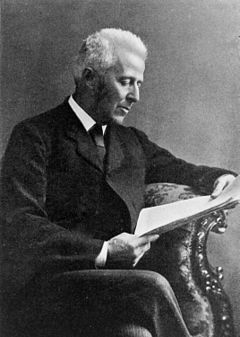
The professor produced a vial filled with a bitter amber-colored liquid and asked the medical students to dip a finger in it and taste it, so he could determine how many of them had developed their powers of observation. The students grimaced but did as they were told, and the professor likewise dipped his finger in the loathsome liquid. You did well, he said when all had done, but you did not observe well: for I placed my forefinger in the vial but put my middle finger in my mouth.
At the medical school and in the clinic the professor was indeed known for his extraordinary keen sense of observation. He would notice everything, picking up every detail as soon as the patients walked into the room. He would be looking at their hands, their demeanor, how they walked, how they talked, often determining where they came from by his uncanny ability to recognize regional accents. He drew inferences from their clothes, whether they were new or old or had stains on them, from their shoes, whether they were clean or muddy.
Often he would guess the patients’ occupation before talking to them. Thus the well dressed man with calluses on his hands was clearly a beadle who rang the church bells on Sunday; the one with trousers worn on the inside of his knees was a cobbler; the retired soldier with his hat had not been a civilian for too long, because in the army one did not take one’s hat off; and another retired man had been obviously been in the artillery not cavalry, judging from the way he walked.
Once a patient came limping in the room, and the students promptly decided he had a painful hip. Wrong, he said, did you not notice that he had cut slits in his shoes. He clearly suffers from painful corns. But that was not why he has come to the clinic. His trouble is of a more serious matter. He has come to be treated for chronic alcoholism, as shown by his red nose, bloated phase, bloodshot eyes, and twitching hands and face. And to confirm the diagnosis, see the whisky bottle sticking out of his back pocket.
In another man, also limping but with mud on his shoes and a burn on his trousers, he guessed that having collected his wages he got drunk, slipped on the way home and fell in the mud, then tried to dry himself at an open fire. He astounded a patient who had given a false name by handing him a prescription with the real name on it without even looking up – he later explained that he had read his name on his shirt-band.
The professor was born in Edinburgh in 1837, descended from a family of surgeons intimately involved with the early days of the Royal Infirmary and the Edinburgh School of Medicine. This had been founded in 1697 by the famous Alexander Munro, succeeded by his son Alexander Munro Secundus (of the Foramen of Munro, the opening in the cerebral ventricles), and by his grandson Tertius of the same name. There followed, among others, an eccentric Dr. Alexander Wood who made rounds with a raven and a sheep, the first man in Edinburgh to carry an umbrella – because he was worried the bird would get wet. Then came Dr. Benjamin Bell, followed by an alternation of Benjamins and Josephs.
The Joseph Bell of this story grew up in Edinburgh when life was hard, jobs scarce, sanitation poor; smallpox, typhoid, and typhus rampant. He rose through the ranks, from medical students to dresser, assistant physician (unpaid), physician, then professor. He was a great educator, capable surgeon, and so accomplished a diagnostician that after his retirement he was asked to help solve the mystery of who was Jack the Ripper – unsuccessfully, however.
But among the many students who worked under Joseph Bell (Joe Bell as he affectionately was called) was a young man called Doyle. Bell had recognized his abilities as a student and had appointed him as his dresser. This man was a good writer and wrote many stories featuring a detective who used the deductive methods of his old professor. Later, when famous and knighted, he acknowledged his debt to his former chief. Robert Louis Stevenson, living at the time in Samoa, read the books and is credited to have said “Can this be my old friend Joe Bell.” Rudyard Kipling, also reading one of the stories, at once recognized the influence of the Edinburgh surgeon.
There were differences, however: The detective smoked a pipe, took cocaine, and was a bachelor. Joe Bell was happily married, so devastated when his wife died that his hair turned gray in a day. The student who became so famous was Sir Arthur Conan Doyle. And solving mysterious cases at 221B Baker Street with his friend and companion Dr. Watson, was his famous creation, Sherlock Holmes.
Further reading
Ely M Liebow. Dr Joe Bell: Model for Sherlock Holmes. Ohio: Bowling Green University Press.
GEORGE DUNEA, MD, Editor-in-Chief
Fall 2014 | Sections | Physicians of Note

Leave a Reply